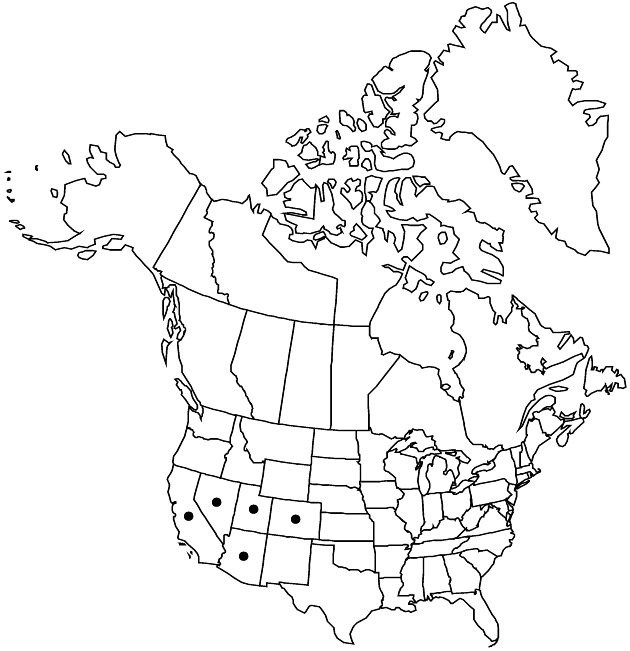Difference between revisions of "Brickellia atractyloides var. atractyloides"
Treatment appears in FNA Volume 21. Treatment on page 494.
FNA>Volume Importer |
imported>Volume Importer |
||
| (One intermediate revision by the same user not shown) | |||
| Line 41: | Line 41: | ||
|publication year= | |publication year= | ||
|special status= | |special status= | ||
| − | |source xml=https:// | + | |source xml=https://bitbucket.org/aafc-mbb/fna-data-curation/src/2e0870ddd59836b60bcf96646a41e87ea5a5943a/coarse_grained_fna_xml/V19-20-21/V21_1240.xml |
|tribe=Asteraceae tribe Eupatorieae | |tribe=Asteraceae tribe Eupatorieae | ||
|genus=Brickellia | |genus=Brickellia | ||
Latest revision as of 20:09, 5 November 2020
Leaf blades deltate, lanceolate, or ovate, 3- or 4-nerved from bases, 10–50 × 5–25 mm, margins sharply dentate or entire, apices acuminate, faces glabrous or minutely glandular-puberulent. Involucres 10–15 mm. Phyllaries: outer 7–16-striate, broadly ovate, margins entire, inner narrowly lanceolate. Florets 40–90; corollas pale yellow-green. 2n = 18.
Phenology: Flowering Mar–Sep.
Habitat: Rock crevices, cliff faces, talus slopes, outwash fans
Elevation: 600–1600 m
Distribution

Ariz., Calif., Colo., Nev., Utah.
Discussion
Selected References
None.
Lower Taxa
None.